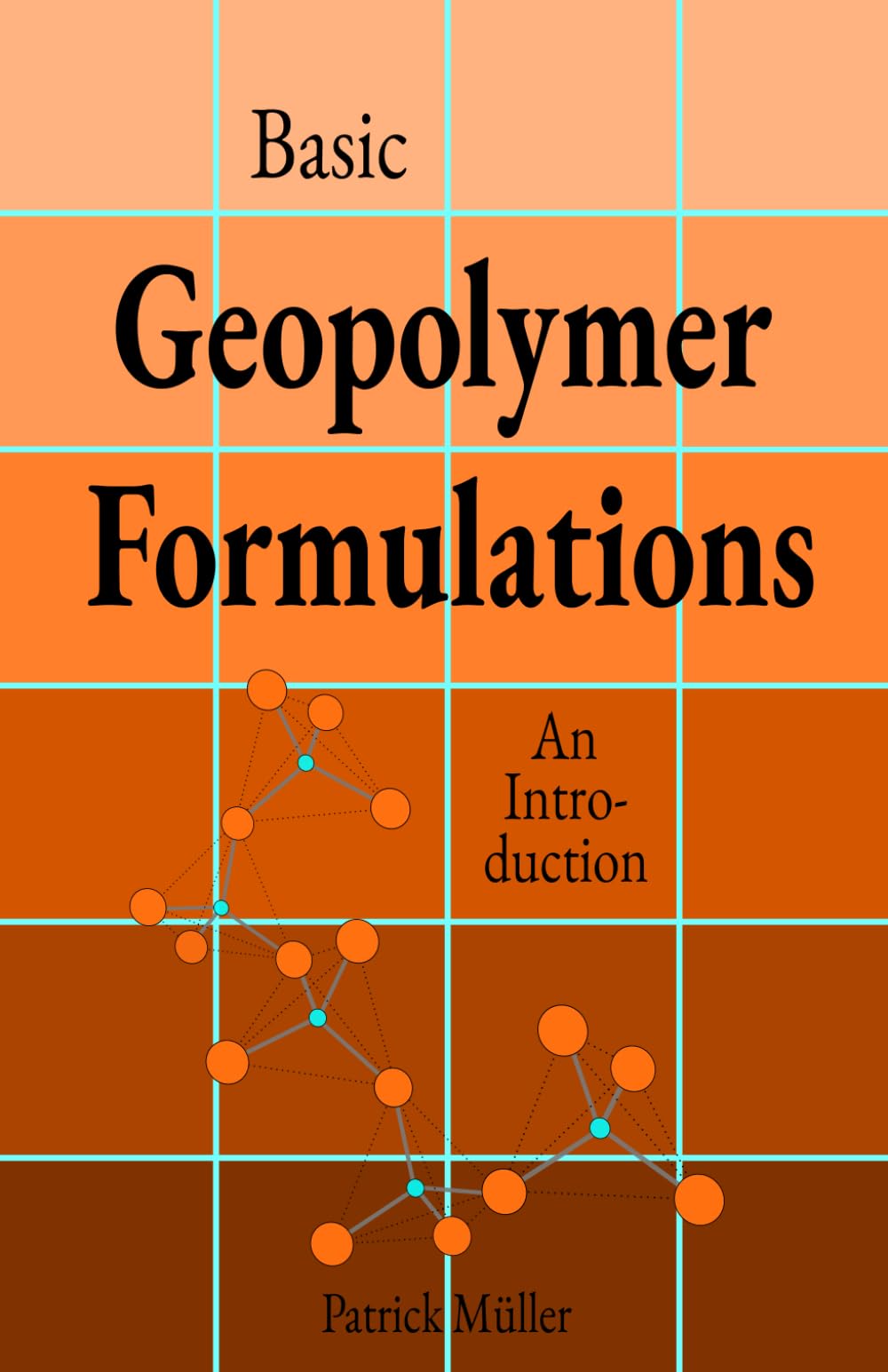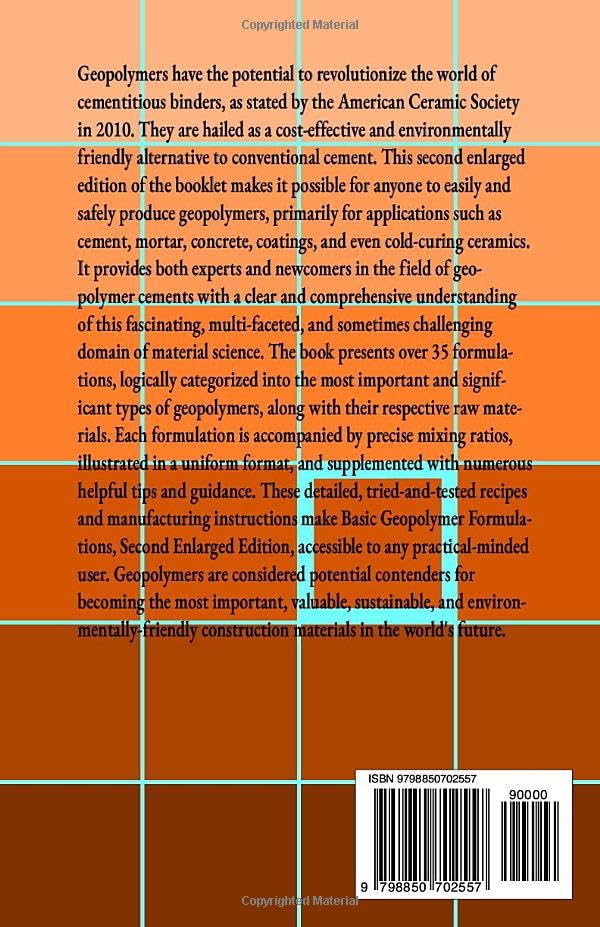Basic Geopolymer Formulations – The Revised Edition Explore enriched formulations and detailed recipes, including common metakaolin, waterglass, slag, SiO2 and fly ash-based geopolymers, as well as innovative phosphorus-based, mixed-alkali, and high-strength geopolymers with over 150MPa compressive strength. This revised guide showcases diverse applications and emphasizes eco-friendly practices, including recycling materials. From the author: “I crafted this book to be the guide I wish I had when I first ventured into geopolymers. Just like food recipes, the formulations provide essential data, making it easy for readers to embark on their journey. With the raw materials in hand, one can transform humble powders and unremarkable liquids into robust, rock-solid geopolymers. These man-made wonders resemble nature’s own rocks, akin to the beauty and resilience of feldspar and many others stones and minerals.” Backcover Geopolymers have the potential to revolutionize the world of cementitious binders, as stated by the American Ceramic Society in 2010. They are hailed as a cost-effective and environmentally-friendly alternative to conventional cement. This second enlarged edition of the booklet makes it possible for anyone to easily and safely produce geopolymers, primarily for applications such as cement, mortar, concrete, coatings, and even cold-curing ceramics. It provides both experts and newcomers in the field of geopolymer cements with a clear and comprehensive understanding of this fascinating, multi-faceted, and sometimes challenging domain of material science. The book presents over 35 formulations, logically categorized into the most important and significant types of geopolymers, along with their respective raw materials. Each formulation is accompanied by precise mixing ratios, illustrated in a uniform format, and supplemented with numerous helpful tips and guidance. These detailed, tried-and-tested manufacturing instructions make Geopolymers: Cementitious Materials for Practical Applications, Second Enlarged Edition, accessible to any practical-minded user. Geopolymers are considered potential contenders for becoming the most important, valuable, sustainable, and environmentally-friendly construction materials in the world’s future. Table of Content 1. Introduction – Practical Geopolymers 2. What is a Geopolymer? 3. Overview of Raw Materials 3.0 Raw Materials (Geopolymer Binder) 3.1 Aggregates Like Sand and Gravel, Reinforcement 4. Steps of Production 5. Geopolymers: Formulations 5.0 Overview of Geopolymer Formulation 5.1 Materials Space Calculation – An Overview 5.2 Metakaolin Geopolymer 5.3 Fly Ash Geopolymer 5.4 Trass Geopolymer 5.5 Rock-Based Geopolymer 5.6 Terra Pozzolana and Tuff/Trass 5.7 Blast Furnace Slag Geopolymer 5.8 Aluminate-Silica-Geopolymer 5.9 Phosphate/Phosphorus Geopolymer 5.10 Potassium Geopolymer 5.11 High-Strength Geopolymer, Ultra-High-Strength Geopolymer 5.12 Sodium-Potassium Geopolymer 5.13 Waterglass and Activation/Hardener Solution Made of SiO2 5.14 Formulation for an Alkali Activated Material (AAM) 5.15 Conversion of Alkalis 5.16 Other Formulations 5.16.1 Bio ash – Waterglass/Silica Fume – NaOH 5.16.2 Metakaolin/Fly Ash – Waterglass – NaOH 5.16.3 Fly ash – Waterglass – NaOH 5.16.4 Fly Ash (Ca-rich) – Waterglass – NaOH 5.16.5 Volcanic Ash – Waterglass – NaOH 5.16.6 Volcanic Ash/Metakaolin – Waterglass – NaOH 5.16.7 Iron-Kaolin 6. Summary 7. Index 8. Legal Notice, About Us, Disclaimer
Basic Geopolymer Formulations: An Introduction into Basic ‘Recipes’, Raw Materials, and Manufacturing Processes of Environmentally Friendly High-Performance Cements (GEOPOLYMERS)
$14.99
This book educates the student on advanced material science and chemistry through the study of geopolymer formulations and applications.
Additional information
| Weight | 0.186 lbs |
|---|---|
| Dimensions | 14 × 0.6 × 21.6 in |







Reviews
There are no reviews yet.